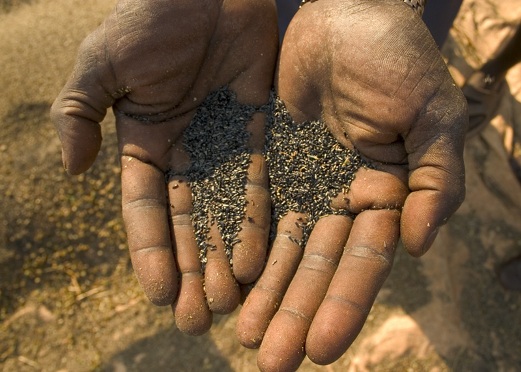What is Noug?

Noug (Guizotia abyssinica)
is an oil-seed crop, indigenous to Ethiopia and holds significant
promise for improving rural livelihoods in Sub-Saharan Africa.
It is of economic significance not only for domestic
consumption in countries where it is grown, but also as an export
commodity to North America and Europe, where it is mainly sold as
bird-feed under it's English name Nigerseed (or "Thistle seed").
The species is used in intercropping systems, grows on poor but
also extremely wet soils, and contributes to soil conservation.
While not fully domesticated, and suffering from low yields and
susceptibility to insect herbivores, it contributes up to 50% of the
Ethiopian oil-seed crop.
Noug belongs to the Compositae family and is closely related to
sunflower. It differs from domesticated sunflower mainly due to
its high level of branching, numerous flower heads and small
seeds.
The oil content of noug seed varies from 30 to 50%. The fatty
acid composition is typical for seed oils of the Compositae
family with linoleic acid being the dominant component.
Noug
in Ethiopia and elsewhere

Ethiopia is well known as centre of diversity for
several
crops, including teff, enset and Ethiopian mustard. As a
result, it has been suggested as Africa’s independent origin of
domestication.
Noug diversity is greatest in Ethiopia and Eritrea
and local farmers are able to distinguish many different land-races.
The process of Noug domestication is incomplete, probably due to
frequent interbreeding with its co-occurring wild relatives.
Apart from Africa (Ethiopia, Sudan, Uganda,
Democratic Republic of Congo, Tanzania, Malawi, Zimbabwe), noug is also
cultivated in parts of South Asia (India, Nepal, Bangladesh, Bhutan)
where it was introduced several thousand years ago, and the West Indies.
Research project on
Noug
An international collaborative
research effort has been launched in order to understand and manage the
genetic diversity of noug for its improvement (project partners see
below).
The challenge of this project (2007-2010) is to show how modern
molecular breeding efforts can be adapted and implemented for neglected
and underutilized species, such as noug, through research on their
diversity. This approach is especially powerful when conducted in the
context of genomic information and tools that have already been
developed for related major crops, in this case sunflower and lettuce.
This requires:
■ collection, characterization and conservation of ecologically
and genetically diverse germplasm
■ initiation or re-orientation of existing breeding and crop
deployment programs to capitalize on this diversity, and
■ transfer of knowledge and technology to breeders and farmers
in Ethiopia.
Neglected
and Underutilized Species
Noug has been categorized as a 'Neglected and Underutilized
Species (NUS)' in an effor to draw attention to this crop and highlight
the importance of reseach on NUS.
An unintended consequence of the green revolution has been a
massive reduction in the number of species and diversity of crops. This
process of crop replacement is a threat to local and global food
security because the replaced indigenous crops often are essential for
low input agriculture, have unique nutritional and cultural value, and
contain a diversity of locally adapted genotypes with resistance to a
wide array of biotic and abiotic stresses.
Global climate change and degradation of once-productive lands
have further heightened the demand for crops that perform well in harsh
and/or changing environments.
Research on noug is designed to improve the yield and quality
of this neglected and underutilized species so it can contribute to the
food security and income of subsistence farmers. More projects of this
kind on a wide range of neglected and underutilized species are needed
to work towards a sustainable solution for increased food security and
poverty alleviation as stated in the United Nations Millennium
Development Goals.
Project
partners
Funded by
Some
more interesting and useful links

